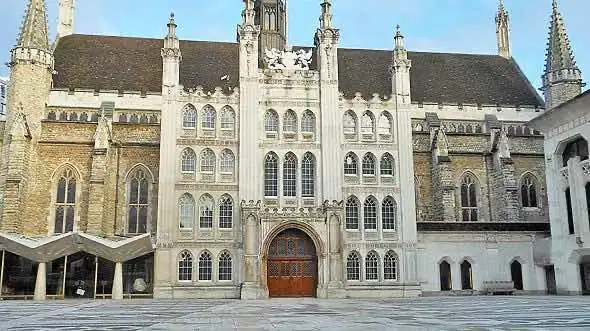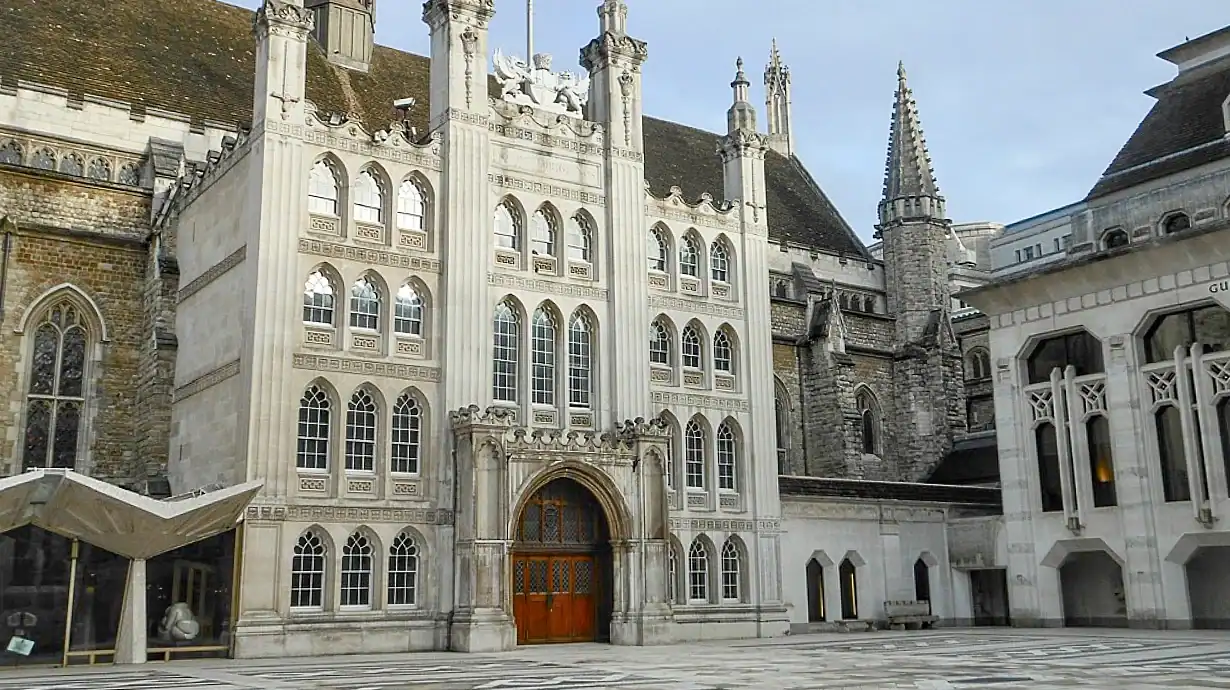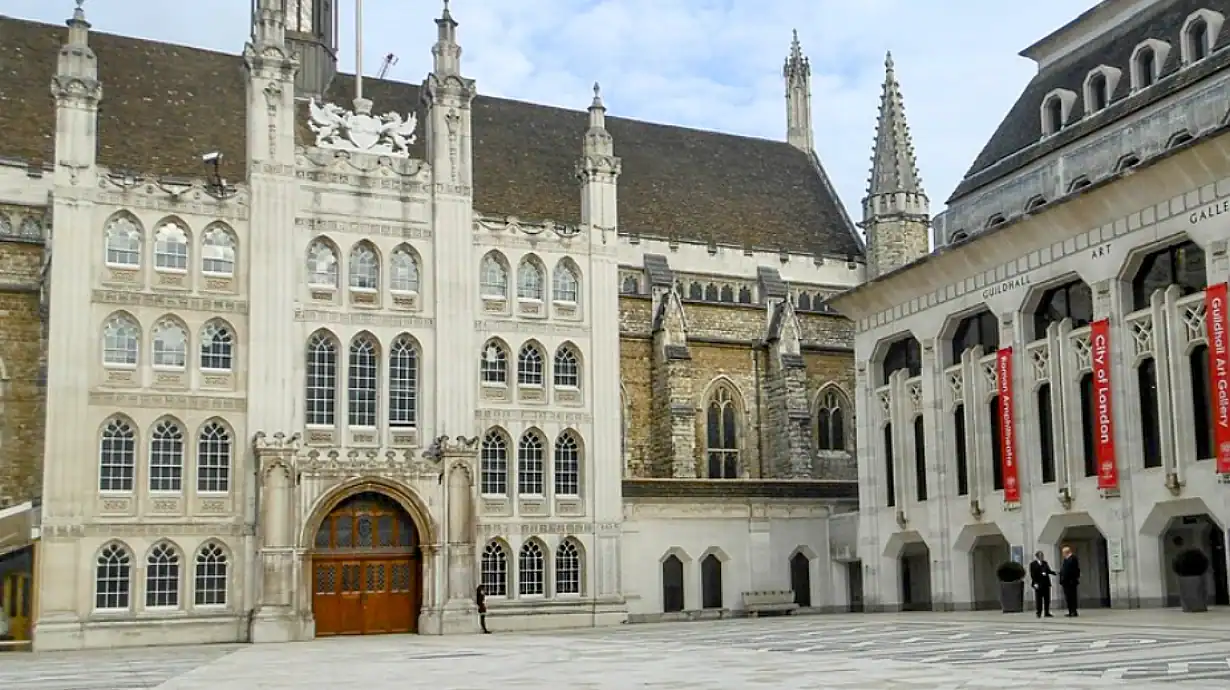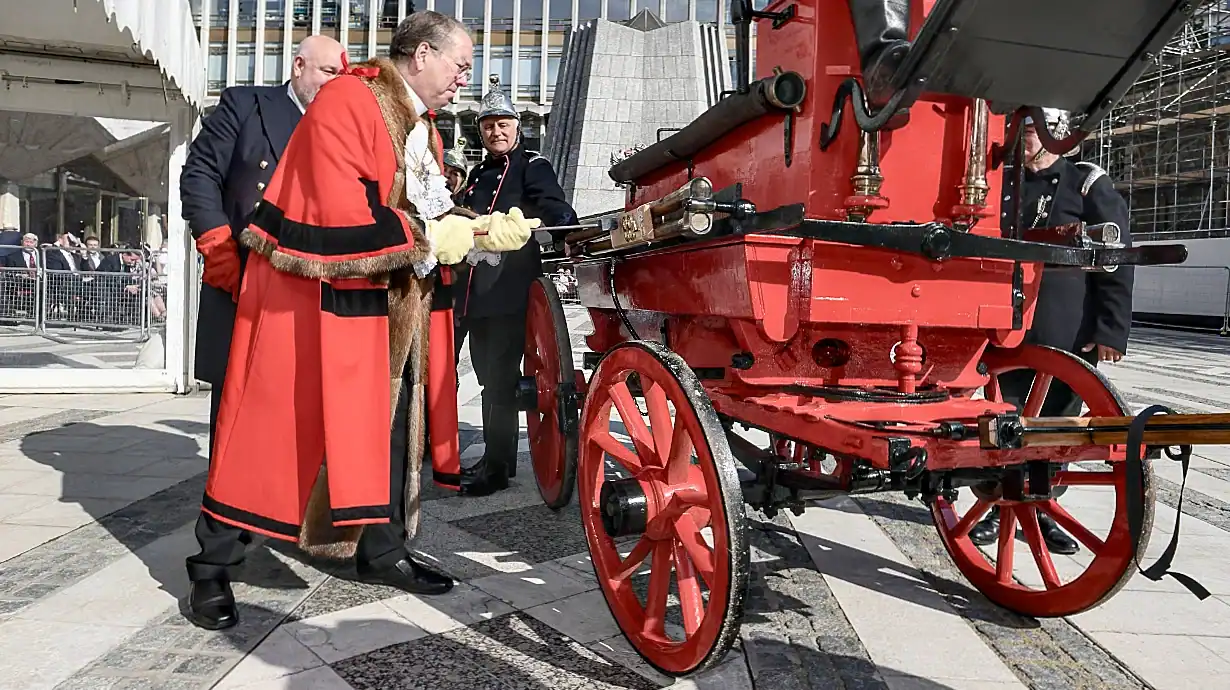
Not many tourists bother visiting Guildhall because it’s tucked away in a side street off Cheapside. Not a lot of locals bother with it either, which is a shame, because it’s one of the most historic buildings in London. The Saxons are supposed to have built the original one on the stumps of the Roman amphitheatre but the one we see today is 15th-century. Ignore the white facade at the front, which was added in the 1780s, and forget the roof too, because that was rebuilt after the Luftwaffe dropped a bomb on top. What you need to look at is the dark brown stonework in the middle. That’s Henry V. That’s the Battle of Agincourt. That’s how old those brown walls are. That’s two centuries before the English Civil War.
Guildhall Art Gallery
The easiest way to get inside is on a guided tour but they only hold them once a month, and you have to email their website to get your name on the list. Then you meet your guide in the cloakroom of the Guildhall Art Gallery next-door. That’s where I’m standing right now, watching all the tourists hanging their hats and bags on the hooks, fifty feet from where the Roman gladiators would have been getting ready for their own bout. Check out my review of the Guildhall Art Gallery if you don’t believe me. (It’s worth turning up thirty minutes early just to have a quick look around the remains of the Roman amphitheatre.)
Our guide today is a nice elderly lady and she won’t mind be mentioning that she’s elderly because I mean it as a compliment. In my experience older guides are definitely better because the young ones tend to rush around and tell too many jokes, like they’re putting on a performance. Older guides just take their time and tell you the interesting history of it through a bit of friendly conversation.
The Great Hall, Gog and Magog
After a quick walk around the outside of St. Lawrence Jewry (one of Christopher Wren’s City churches) she takes us into the Great Hall itself. It’s been remodelled a lot since Dick Whittington’s day, but it’s still hanging with faded flags and banners of the City’s livery companies. You can see grand statues of Nelson, Wellington, Winston Churchill and William Pitt down the sides, but you need to look up on the balcony for the most famous ones: the golden statues of Gog and Magog. Legend says that Brutus slew and chained them to his palace gates, but over the years they’ve morphed into benevolent guardians, like the City’s human guard dogs, and they’ve supplanted Brutus as the good guys. Every time the statues got destroyed we rushed to rebuild them in case they brought bad luck upon the city.
It’s amazing to think that Henry V held a big banquet within these very walls, and Lady Jane Grey was put on trial for her life after her nine-day reign. Archbishop Thomas Cranmer and Thomas Culpeper ended up here as well after falling out with Henry VIII. These days it’s mainly used for meetings and formal dinners.
The Old Library
After we’ve seen the Great Hall she takes us down some stone stairs into the crypt and Old Library with its stained glass windows and huge, heavy tapestries on the walls. And that’s it.
…but not quite… because they always time their guided tours to coincide with the monthly Common Council meeting. If you don’t mind hanging around for a while then you can come back and see the Great Hall in use.
I also recommend… If you enjoy this then try Mansion House (you can walk it in 4 mins) and Royal Courts of Justice (walk it in 20 mins or travel from Bank to Temple by tube). If you’re visiting the Guildhall then try and time it with the Common Council meeting
How to get to the Guildhall
| Fare zone | Cash | Oyster & Contactless | Travelcard | ||||
|---|---|---|---|---|---|---|---|
| Single fare | Single fare | Daily cap | One day | ||||
| Peak | Off-peak | Peak | Off-peak | Anytime | Off-peak | ||
| Bus (all zones) | n/a | £1.75 | £5.25 | £6 | |||
| Train (zone 1) | £7 | £2.90 | £2.80 | £8.90 | £8.90 | £16.60(zone 1-4) | £16.60(zone 1-6) |
| Train (zone 1-2) | £7 | £3.50 | £2.90 | £8.90 | £8.90 | ||
| Train (zone 1-3) | £7 | £3.80 | £3.10 | £10.50 | £10.50 | ||
| Train (zone 1-4) | £7 | £4.60 | £3.40 | £12.80 | £12.80 | ||
| Train (zone 1-5) | £7 | £5.20 | £3.60 | £15.30 | £15.30 | £23.60(zone 1-6) | |
| Train (zone 1-6) | £7 | £5.80* | £3.80* | £16.30 | £16.30 | ||
| * Journeys between zone 1 and Heathrow are always charged at the peak rate. Prices are correct as of | |||||||
Related articles and events
Search for political events in London, political events today, tomorrow, this weekend and during April and May, or see what’s on in The City


 Twitter
Twitter Facebook
Facebook Bluesky
Bluesky WhatsApp
WhatsApp Email
Email





